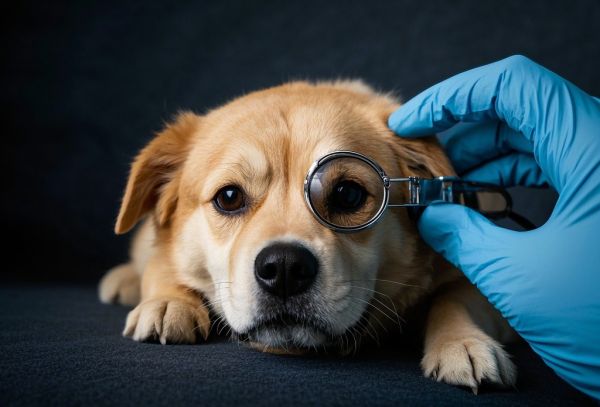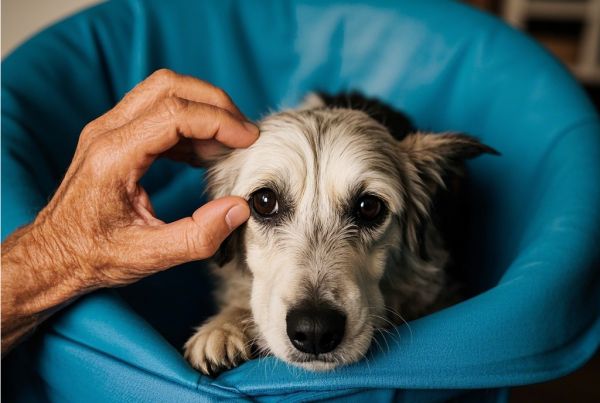Family care programs for elderly pets

Identify signs of aging in older pets
The aging process of dogs and cats is not sudden, and many physiological changes manifest in extremely subtle early on. If the owner can be aware of the deterioration of vision and mobility, he will be able to make more preparations for adjustments.
Vision loss is usually manifested as hitting a wall, unsteady walking, not daring to go up and down stairs, and unwilling to move at night. When familiar environments become blurred in their eyes, pets tend to show confusion and hesitation, walk slowly, avoid obstacles carefully, and even react in a frightening manner when people approach. Some pets will become extremely anxious or stubbornly stay in the unfamiliar or dimly lit environment, indicating that their vision is difficult to support their original spatial positioning capabilities.
The slow movement changes are more common. Pets get up slowly, walk slowly, no longer like to run or lie down frequently, are all signals of decreased muscle tone and decreased joint flexibility. When the weather turns cooler, the hind limbs are more pronounced, indicating that there may be aging-related inflammation or soft tissue degeneration in the joints.
These changes are often gradually formed and are easily mistaken for "just becoming lazy" or "character changes". In fact, they are signals from the aging of the body and need to be taken seriously.
Environmental adaptation and optimization of activity line
When pet vision and mobility are weakened, adjustments to the family environment are particularly critical. If the spatial layout remains in the state of the pet when he was young, it may cause actual harm or psychological distress to it.
First, the height difference and obstacles in the space should be reduced. Remove loose items, wires, scattered toys on the ground to keep the passage smooth and prevent pets from tripping or getting stuck while moving. For families with stairs, pet ramps can be used instead of high drop climbing to avoid pets falling due to insufficient leg strength.
Ground material is also an important factor. Many pets are difficult to maintain balance on smooth floors due to decreased muscle strength and dry claw pads after old age, and are prone to slip. Anti-slip floor mats or rubber mats can be laid in areas where pets often walk to assist them in their stable movements.
It is very important to create a fixed line of life activities for elderly pets. Set food bowls, water bowls, litter boxes or sleeping pads in easy-to-reach, quiet, unobstructed areas to minimize their need to turn or jump frequently in life. Fixed moving lines can also enhance pets’ spatial memory, especially when vision deteriorates, familiarity can relieve their anxiety.
Night lighting also needs to be considered. As your vision decreases, pets are more likely to have accidents when there is insufficient light. Setting soft night lights in their active areas helps them identify paths and enhance security.
Moderate exercise and muscle function maintenance
Although older pets have decreased mobility, it does not mean that they should be kept completely in peace. Moderate exercise can delay muscle atrophy, maintain joint flexibility, and even have a positive effect on cardiopulmonary function and mental state.
For dogs, short-term, low-intensity walks can be arranged according to their physical condition. Choose a flat and quiet road to allow the dog to move independently at a comfortable pace. It is not advisable to pull quickly or walk for a long time. In cold or humid weather, you can adjust your travel time or put on joint protective covers to avoid the cold aggravate joint discomfort.
Although cats are naturally alone, moderate activities are still important. It can be guided to play some light games, such as slow-moving cat sticks, slowly rolling ball toys, etc., to awaken its desire to explore and help the muscles maintain tension. Avoid high-frequency jumps and high platform movements, and instead design more horizontally moving game forms.
Before and after exercise, you can give pets a gentle massage, especially often stressed areas such as the back, shoulder scapula, and hind legs, which helps promote blood circulation, relieve stiffness, and improve the overall comfort of the pet. If conditions permit, you can also choose low-impact exercise methods such as warm water swimming and spa, which are especially suitable for dogs with joint deterioration but are still willing to move.
The frequency and intensity of exercise should be dynamically adjusted according to the pet's mental state, appetite, rest quality and other signals to avoid excessive exercise or accumulation of fatigue.

Nutritional support and joint health interventions
The metabolic efficiency of elderly pets has decreased and the ability to absorb nutrients has also been weakened. Therefore, moderate adjustments should be made in the dietary structure. In addition to ensuring basic nutritional balance, special attention should be paid to the key components required by joints, muscles and nervous system.
Protein is the core nutrient that maintains muscle mass, but excessive protein intake may increase kidney burden. High-quality protein sources with high biological value and easy-to-digestible digestibility, such as animal protein ingredients in chicken breasts, fish or formula foods, while controlling overall intake.
In terms of joint health care, glucosamine, chondroitin, MSM, Omega-3 fatty acids, etc. have been widely proven to have certain auxiliary effects. These ingredients can slow down the degeneration of joint cartilage, reduce local inflammation, and improve the flexibility of joint movement. There are already many joint health products and formula foods for pets on the market, and you can choose a category that suits individual conditions according to the veterinary advice.
Mineral elements such as calcium, vitamin D and magnesium cannot be ignored, as they have an important impact on bone density and neuromuscular synergy. Natural ingredients or supplements rich in these ingredients can be added in moderation to the diet, but blind overlap should be avoided to prevent overnutrition or imbalance in proportion.
Moisture intake is equally important. Aging pets often drink less water, which leads to increased fluid circulation and metabolic burden. The owner can increase the proportion of wet food, use automatic drinking water drinkers, and place water bowls in multiple places.
If your pet has obvious joint pain or degenerative arthritis symptoms, use nonsteroidal anti-inflammatory drugs (NSAIDs) or sustained-release analgesics under the guidance of a veterinarian, combined with rehabilitation physical therapy to relieve their discomfort.
The importance of emotional soothing and psychological support
Aging is not only a physical change, but also often accompanied by fluctuations in the psychological and behavioral levels. Some older pets will show emotional instability, clingy, irritable or frequent whine, which are likely to be associated with anxiety, cognitive decline, or loneliness.
The owner should give more companionship and interaction. Even if you just speak softly, caress your head, and sit quietly beside you, you can make your pet feel safe and attention. Keeping the pace of life as stable as possible and avoiding significant changes in the environment, such as moving and frequent family member changes, these are great challenges to the adaptability of older pets.
For pets who have shown symptoms of cognitive impairment, cognitive degeneration can be delayed by increasing anticipated interactions and moderate stimulation of hearing and smell. For example, performing the same simple instruction training at a fixed time every day, or providing blankets, toys, etc. with owner scent, helps pets maintain a sense of familiarity with the world around them.
They should also respect their need for solitude. Aging pets often need more stable rest, and their owners need to avoid frequent disturbances, especially when they enter deep sleep. Setting it with a quiet, soft, well-insulated resting corner will help to relax the body and mind in an all-round way.
Aging is a natural and irreversible journey, but it can also be a peaceful and dignified stage of life. When the owner is willing to welcome the pet's old age with a gentle and meticulous attitude, every slow motion and every hesitant step is no longer anxious, but a rhythm worth accompanying and cherishing. Providing an elderly pet with a safe, comfortable and warm living environment is to give them the most affectionate feedback.
相关知识
A.家庭服务师 B.老人护理师 C.婴儿看护 D.母婴护理员 E.家庭教师 F.宠物护理员 的翻译是:A. Family Services Division b. elderly care Division c. infant care d. maternal and child care worker E. tutor F. pet care 中文翻译英文意思,翻译英语
托福口语练习之宠物话题(1)
养宠物的好处和坏处英语作文(高分悬赏!!英语作文 大学生在宿舍养宠物的利弊。《现在就要,要求中英文都有的》)符号窝
The relationship between pets and human(宠物和人之间的关系)
Pets and People
Warm Care for Pets After Surgery: A Home Care Guide to Accelerate Recovery
“宠物伴老”服务设计
Pets and People(宠物和人)
Hong Kong Pet Care Market 2025 – StrategyHelix Ltd.
英语作文:养宠物 Raise a cat(精选23篇)
网址: Family care programs for elderly pets https://m.mcbbbk.com/newsview1189556.html
| 上一篇: 2年中国宠物主配料组成关注因素 |
下一篇: 老年猫的猫粮喂养建议是什么?如何 |
